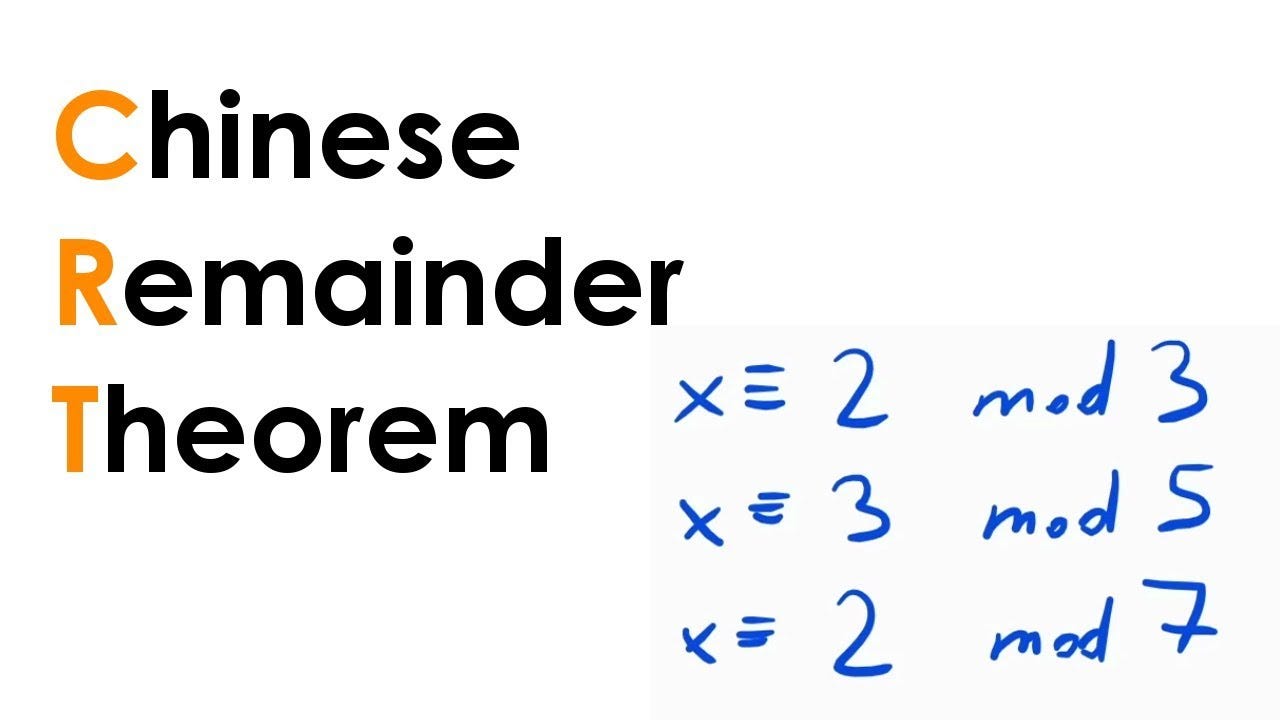
The Chinese Remainder Theorem (CRT) is a fascinating concept in number theory with diverse applications in various fields, including cryptography, computer science, and engineering. This theorem, which dates back to ancient China, provides a method for solving systems of congruences with relatively prime moduli. Understanding the CRT involves delving into the realm of modular arithmetic and exploring the intricate relationships between remainders and divisors.
In this article, we will unravel nine essential facts about the Chinese Remainder Theorem, shedding light on its historical significance, underlying principles, and practical implications. From its origins in ancient Chinese mathematics to its modern-day relevance in digital communication and algorithm design, the CRT has left an indelible mark on the world of mathematics and beyond. Join us on this enlightening journey as we explore the beauty and utility of the Chinese Remainder Theorem.
Key Takeaways:
- The Chinese Remainder Theorem, originating in ancient China, is a powerful tool in number theory and has diverse applications in cryptography and algorithmic efficiency.
- This theorem provides constructive solutions to simultaneous congruences and has inspired advancements in error-correcting codes, modular arithmetic, and mathematical exploration.
The Chinese Remainder Theorem dates back to ancient China.
The Chinese Remainder Theorem, often abbreviated as CRT, has a rich historical background. It originated in ancient China and was first described in the "Mathematical Classic of Sunzi" around the 3rd century. This theorem has stood the test of time, captivating mathematicians and scholars for centuries with its elegant principles and practical applications.
It is a fundamental concept in number theory.
The Chinese Remainder Theorem holds a significant place in number theory, a branch of mathematics that explores the properties and relationships of numbers. This theorem provides a powerful tool for solving systems of linear congruences and has widespread implications in various mathematical disciplines.
The theorem is named after its Chinese origins.
The Chinese Remainder Theorem derives its name from its historical roots in ancient China. This naming convention pays homage to the theorem's origins and the mathematical insights cultivated by Chinese scholars throughout history.
It offers a constructive solution to simultaneous congruences.
One of the remarkable aspects of the Chinese Remainder Theorem is its ability to provide a constructive solution to a system of simultaneous congruences. This practical approach sets it apart as a valuable tool for solving complex mathematical problems.
The theorem has diverse applications in cryptography.
The Chinese Remainder Theorem plays a pivotal role in modern cryptography, where it is utilized to optimize encryption and decryption processes. Its applications in this field highlight its relevance in safeguarding sensitive information and securing digital communications.
It forms the basis for error-correcting codes.
The Chinese Remainder Theorem serves as a foundational concept in the development of error-correcting codes, which are essential in ensuring the accuracy and integrity of transmitted data. This application underscores the theorem's real-world significance in information technology and communication systems.
The theorem is deeply intertwined with modular arithmetic.
Modular arithmetic, a fundamental area of mathematics dealing with operations on integers, shares a close relationship with the Chinese Remainder Theorem. This connection underscores the theorem's influence on diverse mathematical concepts and problem-solving techniques.
It has inspired advancements in algorithmic efficiency.
The Chinese Remainder Theorem has spurred advancements in algorithmic efficiency, contributing to the development of streamlined computational methods and enhancing the performance of mathematical algorithms across various domains.
The theorem continues to fuel mathematical exploration and innovation.
The Chinese Remainder Theorem remains a source of inspiration for mathematicians and researchers, driving ongoing exploration and innovation in the field of number theory and its applications in diverse scientific and technological domains.
The Chinese Remainder Theorem, a cornerstone of number theory, has left an indelible mark on the landscape of mathematics and its practical applications. With its historical significance, versatile applications, and enduring influence, this theorem continues to captivate the minds of mathematicians and contribute to advancements in cryptography, information technology, and algorithmic efficiency. Its timeless principles and constructive solutions underscore its enduring relevance, making it a vital component of mathematical exploration and innovation.
Conclusion
In conclusion, the Chinese Remainder Theorem is a powerful tool in number theory and has diverse applications in various fields, including cryptography, computer science, and real-world problem-solving. Understanding the fundamental principles and applications of the theorem can provide valuable insights into solving complex modular arithmetic problems efficiently. By leveraging the theorem's properties and algorithms, mathematicians and computer scientists can tackle intricate mathematical challenges with elegance and precision, making it an indispensable concept in the realm of number theory and its practical applications.
FAQs
What is the Chinese Remainder Theorem?The Chinese Remainder Theorem is a fundamental concept in number theory that provides a method for solving systems of linear congruences. It allows the reconstruction of an integer from its remainders modulo several relatively prime numbers.
In which fields is the Chinese Remainder Theorem applied?The Chinese Remainder Theorem finds applications in diverse fields, including cryptography, computer science, and real-world problem-solving. It is utilized in cryptographic systems, error-correcting codes, and various algorithms for efficient computation.
Was this page helpful?
Our commitment to delivering trustworthy and engaging content is at the heart of what we do. Each fact on our site is contributed by real users like you, bringing a wealth of diverse insights and information. To ensure the highest standards of accuracy and reliability, our dedicated editors meticulously review each submission. This process guarantees that the facts we share are not only fascinating but also credible. Trust in our commitment to quality and authenticity as you explore and learn with us.
